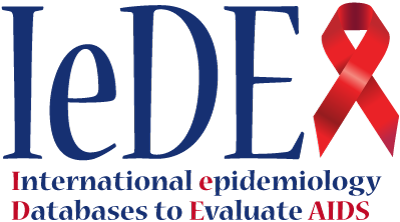Regional website
www.iedea-sa.org
IeDEA Southern Africa on PubMed
Link to Southern Africa Publications in PubMed
Principal Investigators
Matthias Egger
University of Bern
Bern, Switzerland
Mary-Ann Davies
University of Cape Town
Cape Town, South Africa
Countries
- Lesotho
- Malawi
- Mozambique
- South Africa
- Zambia
- Zimbabwe
Background
Southern Africa is the region the most heavily affected by the HIV epidemic: about 13 of the 35 million adults and children living with HIV are from Southern Africa. The region continues to be the epicenter of the HIV/AIDS epidemic with about 33% of the world’s new HIV infections among adults, 20% of new infections among children and 30% of AIDS-related deaths occurring in Southern Africa (UNAIDS).
The past decade has seen a massive expansion of ART. Efforts by governments and others have resulted in an increase in HIV/AIDS interventions and particularly ART. In July 2015, UNAIDS announced that the goal of 15 million people on life-saving HIV treatment by 2015, had been met nine months early. In some countries in Southern Africa the number of people starting ART now exceeds the number acquiring HIV.
Operational, clinical and public health research is urgently needed to guide the long-term delivery of HIV care and ART to the many patients in need, including pregnant women, infants, children and adolescents.
IeDEA-SA includes six of the countries most affected by HIV worldwide, including the Republic of South Africa, the country with the largest number of HIV+ people.
Specific Aims
- To measure the effectiveness of antiretroviral therapy in southern Africa, and to describe factors that influence outcomes;
- To improve the prognosis of people living with HIV and AIDS eligible for or initiating highly active antiretroviral treatment in southern Africa through timely and operative regional epidemiological evaluations; and
- To increase the capacity for delivering antiretroviral therapy in this region by increasing the capacity for monitoring exposures and outcomes at the individual and population levels.
Research Objectives
- To describe issues related to the provision of health care to children and adults in southern Africa with a focus on the delivery of ART, waiting times and program level influences on survival and other outcomes, including losses to follow up;
- To describe antiretroviral treatment issues in adults (including pregnant women) and children, with an emphasis on the monitoring of treatment response and prognostic factors, including exposure to drugs to prevent mother to child transmission of HIV, and adverse events associated with antiretroviral treatment; and
- To describe issues related to important complications of HIV infection and antiretroviral therapy use, with a focus on tuberculosis, the immune reconstitution and inflammatory syndrome, and prophylaxis against life-threatening opportunistic infections.
